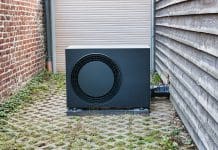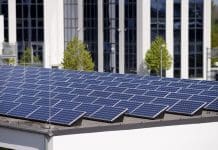Retrofitting your stock for energy efficiency probably feels like an overwhelming battle; a job that will never end. Where to start? How to prioritise? What measures to install?
It probably also feels like a thankless task, given there is so little detail available in terms of policy and targets, as the crucial Heat and Buildings Strategy keeps getting kicked down the road.
And that’s not even taking into account all of the other safety retrofitting and building of new homes you’re supposed to be doing too (that’s a debate for another blog, which as it happens you can read here).
Well, there is at least one reason to be upbeat.
PAS 2035 – A guiding light
PAS 2035 is the new standard for the project management and installation of retrofit measures. Officially implemented at the beginning of July for all public sector-funded retrofit measures, it is designed to ensure that a whole-house approach is taken and households are adequately protected. Alongside its sister standard, PAS 2030, it promotes a much more holistic approach to retrofits, that accounts for considerations such as the wellbeing of the occupants, a fabric-first methodology, and the improved functionality and energy efficiency of buildings.
The standard does this partly by introducing a number of new roles to the retrofit process, such as a retrofit assessor to make decisions on what changes are needed upfront, and then a retrofit coordinator to oversee the project from beginning to end. Individuals in these positions will need to be trained to the standard and registered with TrustMark, as will installers.
What’s particularly pleasing is the whole-house approach. This takes into account a building’s individual circumstances such as whether it’s on- or off-gas, what measures have already been installed, whether it’s in a rural location etc. It will mean homes can have tailored forward plans of action, negating concerns over any need for future remediation work for inappropriate measures.
This may mean that we see a shift in funding focus. Whereas retrofit funding has mainly been measure-led in the past (for insulation for example), we might now see money also allocated for inspection/assessment and the development of retrofit plans, whatever measures they suggest.
This benefits landlords, as you’re not having to shell out to replace poorly installed or poorly chosen measures, and it benefits residents as it reduces disruption and will help to make them more comfortable and reduce fuel bills.
Chances are you’ve probably heard of PAS 2035, and if your organisation is delivering projects with ECO3, Local Authority Delivery Scheme or Social Housing Decarbonisation Scheme funding, then you will have to adhere to the standard.
These are currently the only funding streams that require PAS 2035 to be used, but I’m confident that we’ll see it rolled out much more widely in the future, to the benefit of even more homes, landlords and residents.
Here’s why: a little-known part of the Green Homes Grant was funding for the training of new retrofit assessors and coordinators, so the government has already been gearing the industry up.
Laying the groundwork for wider implementation
Understandably, there is some hesitancy in the sector to invest too much time and money in PAS 2035 training, simply because of the stop-start nature of previous low carbon retrofit schemes. However, the fact that we’ve already seen PAS 2035 rolled out across flagship retrofit funding pots suggests the government is laying the groundwork for wider implementation.
Indeed, in the most recent consultation document on the proposed ECO4 scheme, which will run from next April until March 2026 at an average cost of £1bn per year, the Government has indicated that it wants to see ECO increasingly support owner-occupied households too, aligning with other policies to decarbonise the housing stock. Social homes with EPCs in bands E, F and G will also be supported for insulation, first-time central heating measures and smart heating controls.
So, I think that whatever comes out of the Heat and Buildings Strategy, we can expect PAS 2035 to be at the core of Government energy efficiency funding.
Driving up energy efficiency retrofit standards
Inevitably, where social housing leads, the rest of the sector is sure to follow. My hope is that PAS 2035 will drive up energy efficiency retrofit standards across the board, creating greener homes for everyone.
So if you’re currently delivering projects in which you need to adhere to PAS 2035 standards – or even if you’re not but want to get ready for its wider implementation anyway – where can you find suppliers at this early stage?
At LHC and CPC, we’ve been getting ready for this.
Installers on our Energy Efficiency Measures and Associated Works (N8) and Energy Efficiency Consultancy (N8C) frameworks were asked to demonstrate their adherence to PAS 2030 when tendering – the precursor standard for PAS 2035.
That means the companies need to have knowledge of PAS 2035, and use retrofit coordinators to oversee their work.
As well as this, our suppliers are already training their staff to work in line with PAS 2035, or can sub-contract to those who are trained, where capacity and need dictates.
Therefore, if you have any questions about PAS 2035, need to implement it as part of your projects, or are at the start of your green retrofit journey and want to know more, please do get in touch with our knowledgeable team here.














